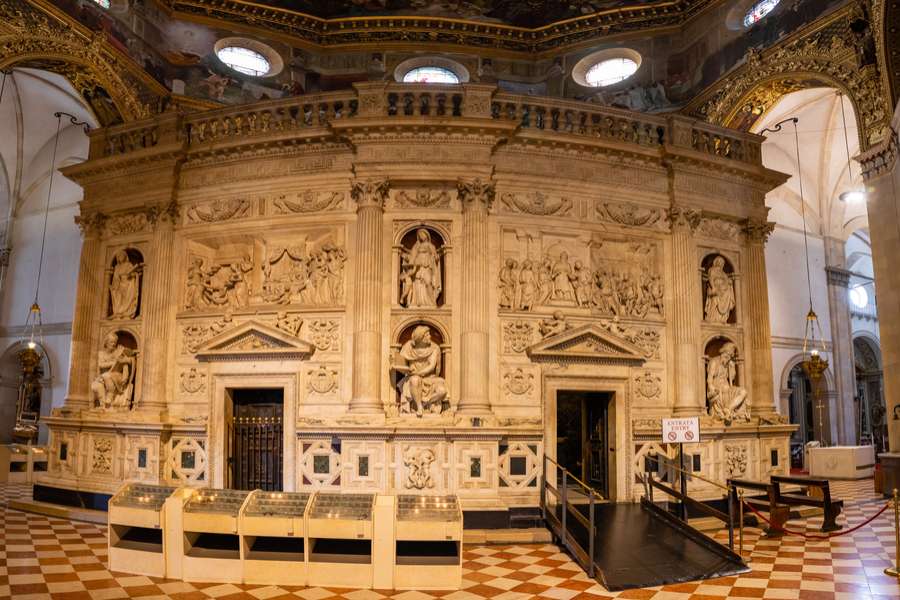
Detail from the marble chapel built around the Prague replica of the Holy House from Nazareth. Construction started in 1626 and the Holy House was blessed on 25 March 1631.

The marble facade of the Holy House in Loreto, Italy is very similar to the marble facade of the Holy House in Prague.
Everyone agrees that Jesus grew up in Nazareth. He lived there with the Virgin Mary and St. Joseph. So how can so many places in Europe claim to have the Holy House of the Virgin Mary?
There was a chapel of the Virgin in Loreto, Italy since the late AD 1200s. It contained a small replica of the house in Nazareth for the faithful to visit if they could not go on pilgrimage to the Middle East. Monks (often referred to as “angels”) brought a few stones from Nazareth to add to the Holy House in Loreto. During the Renaissance, an elaborate marble façade was built around the Holy House to protect it and then a large church was built around the marble chapel. “Our Lady of Loreto” is the title of the Virgin Mary with respect to the Holy House of Loreto and her statue, carved from Cedar of Lebanon, is a “Black Madonna” (owing to centuries of lamp smoke).
Other replicas of the Holy House were constructed in many places. The most famous are in Prague and Walsingham. (The Holy House in Walsingham was destroyed by order of King Henry VIII but new shrines of the Mother of God were built there in the late 1800s and early 1900s.) The original statue of the Mother of God was thought to be destroyed when the Holy House–often called “England’s Nazareth”–was destroyed but it might have been cleverly hidden instead. A statue of the Virgin in the Victoria and Albert Museum might be the original; read about it here.
